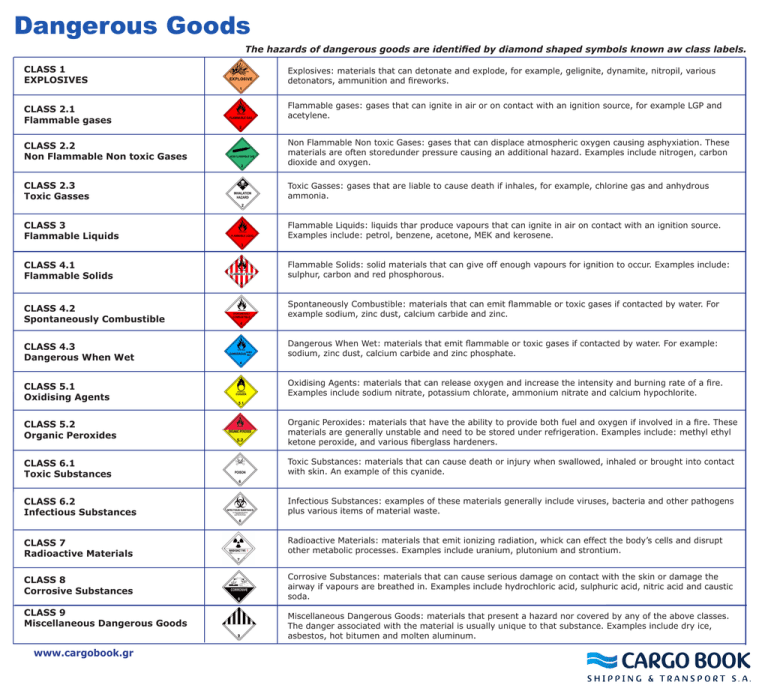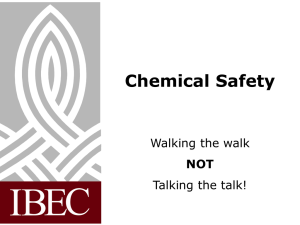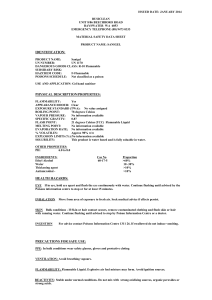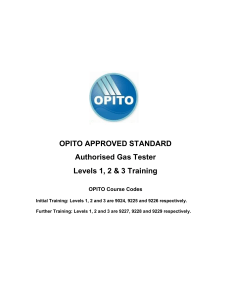Dangerous Goods Classes & Hazards: A Quick Guide
advertisement

Dangerous Goods The hazards of dangerous goods are identified by diamond shaped symbols known aw class labels. CLASS 1 EXPLOSIVES Explosives: materials that can detonate and explode, for example, gelignite, dynamite, nitropil, various detonators, ammunition and fireworks. CLASS 2.1 Flammable gases Flammable gases: gases that can ignite in air or on contact with an ignition source, for example LGP and acetylene. CLASS 2.2 Non Flammable Non toxic Gases Non Flammable Non toxic Gases: gases that can displace atmospheric oxygen causing asphyxiation. These materials are often storedunder pressure causing an additional hazard. Examples include nitrogen, carbon dioxide and oxygen. CLASS 2.3 Toxic Gasses Toxic Gasses: gases that are liable to cause death if inhales, for example, chlorine gas and anhydrous ammonia. CLASS 3 Flammable Liquids Flammable Liquids: liquids thar produce vapours that can ignite in air on contact with an ignition source. Examples include: petrol, benzene, acetone, MEK and kerosene. CLASS 4.1 Flammable Solids Flammable Solids: solid materials that can give off enough vapours for ignition to occur. Examples include: sulphur, carbon and red phosphorous. CLASS 4.2 Spontaneously Combustible Spontaneously Combustible: materials that can emit flammable or toxic gases if contacted by water. For example sodium, zinc dust, calcium carbide and zinc. CLASS 4.3 Dangerous When Wet Dangerous When Wet: materials that emit flammable or toxic gases if contacted by water. For example: sodium, zinc dust, calcium carbide and zinc phosphate. CLASS 5.1 Oxidising Agents Oxidising Agents: materials that can release oxygen and increase the intensity and burning rate of a fire. Examples include sodium nitrate, potassium chlorate, ammonium nitrate and calcium hypochlorite. CLASS 5.2 Organic Peroxides Organic Peroxides: materials that have the ability to provide both fuel and oxygen if involved in a fire. These materials are generally unstable and need to be stored under refrigeration. Examples include: methyl ethyl ketone peroxide, and various fiberglass hardeners. CLASS 6.1 Toxic Substances Toxic Substances: materials that can cause death or injury when swallowed, inhaled or brought into contact with skin. An example of this cyanide. CLASS 6.2 Infectious Substances Infectious Substances: examples of these materials generally include viruses, bacteria and other pathogens plus various items of material waste. CLASS 7 Radioactive Materials Radioactive Materials: materials that emit ionizing radiation, whick can effect the body’s cells and disrupt other metabolic processes. Examples include uranium, plutonium and strontium. CLASS 8 Corrosive Substances Corrosive Substances: materials that can cause serious damage on contact with the skin or damage the airway if vapours are breathed in. Examples include hydrochloric acid, sulphuric acid, nitric acid and caustic soda. CLASS 9 Miscellaneous Dangerous Goods www.cargobook.gr Miscellaneous Dangerous Goods: materials that present a hazard nor covered by any of the above classes. The danger associated with the material is usually unique to that substance. Examples include dry ice, asbestos, hot bitumen and molten aluminum.





